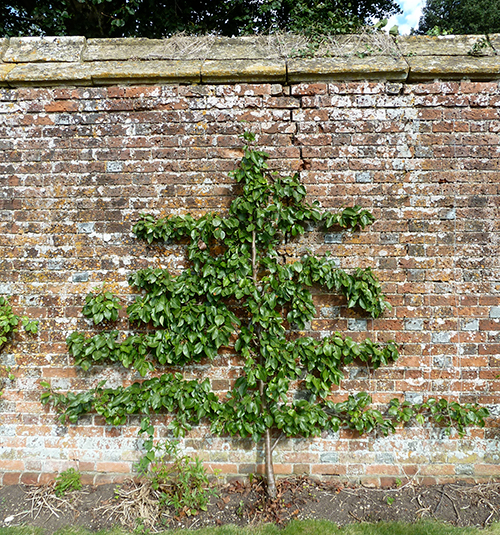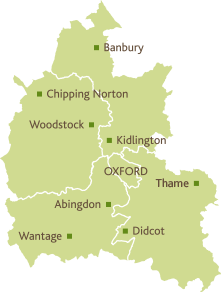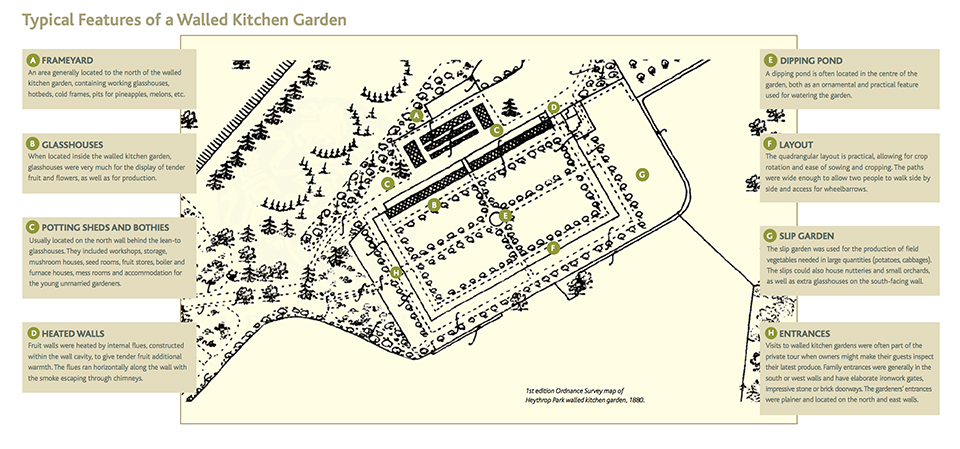Research on Oxfordshire’s parks and gardens
The objectives of the Trust include the following activities related to research:
- To promote and publish research into the history and development of Oxfordshire gardens.
- To promote the better documentation of Oxfordshire gardens and the preservation and study of archives relating to such parks and gardens and kindred subjects.
These activities are coordinated by a Research Group. OGT members are invited to join the Group to learn new skills including how to undertake field work and research to support this key area of OGT’s work.
Details of the OGT’s research project on Walled Kitchen Gardens, funded by the Heritage Lottery Fund, are given below. Since this project was completed in 2014 the Group has focussed on research contributing to national initiatives such as CB 300 – recording landscapes designed by Capability Brown – and two new projects are underway – Oxfordshire Recreational Parks and Quaker Meeting House Gardens.
Research reports are displayed within each country district, see the maps at the bottom of this page. To access the reports please click on the district you require to the right of the county map.
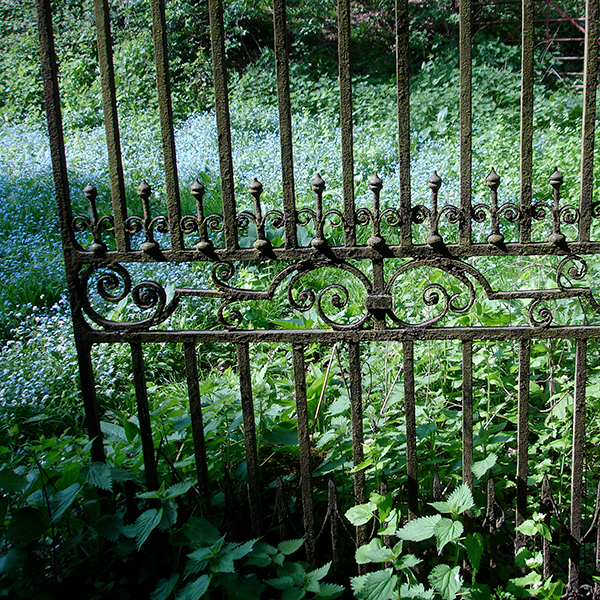
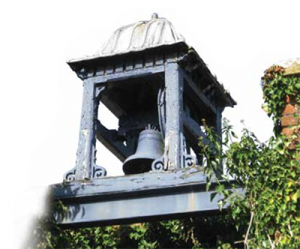 Historic landscapes, parks and gardens.
Historic landscapes, parks and gardens.
These range in age from medieval to modern and in scale from private gardens to the landscaped grounds of great estates through to manorial, college and domestic gardens.
The international importance of Blenheim Palace and its park was recognised through inscription as a World Heritage Site by UNESCO in 1986. Oxfordshire has several other landscapes of national importance including Shotover, Nuneham Courtenay, Rousham, some of the college gardens of Oxford University and the Oxford Botanic Garden.
Fifty-six of the most outstanding sites are included in the Register of Historic Parks and Gardens. These are listed under each of the five Oxfordshire districts below.
Besides the registered sites there are many more which are of local historical importance or whose history is not yet documented. A review of historic parks and gardens in the county was carried out by Colvin and Moggeridge in 1997. Their report identified 185 sites of special interest, either nationally or at county level. The Trust promotes the enjoyment and understanding of all these landscapes through its programme of visits, lectures and research activities.
Quaker Meeting House Gardens
The Quaker movement emerged in the second half of the 17th century. George Fox, generally regarded as the Society’s founder preached his first sermon on the top of Pendle Hill, Lancashire in 1652. His followers saw no need for church buildings and didn’t believe in the necessity of consecrated ground for burial. So they had to find alternative places to rest their dead. Small pieces of land were purchased or donated and generally were enclosed by a wall, hedge or railing. Meetings which took place in private houses were moved to newly built meeting houses by or in the burial ground plots, around the mid-1600s.
In Oxfordshire there are eleven attended Quaker Meeting Houses. One has meetings in a shared religious space, another in a school, a third in a conference centre and the remaining eight are unique. Seven of the eleven have original buildings dating back to the 1660s and six of those are listed.
The grounds have been transformed to gardens over the years and mostly there is little trace of the burials. Quakers regarded tombstones as a “vain custom” in 1717, but by 1850 they thought a plain stone with name, age and date of decease was appropriate. Occasionally some meeting houses do allow interment of ashes.
The purpose of the Quaker Meeting House Gardens Project is to record the garden within the context of a religious place and its historical setting. Attention to planting and present use, within the modern world, is also considered.
Image Monarda Didyma (Bergamot). Associated with the Quaker Plant Hunter Peter Collinson.
Illustration from Curtis’s Botanical Magazine Vol 15-16, no 505 p.546 CC Missouri Botanical Garden, Peter H. Raven Library
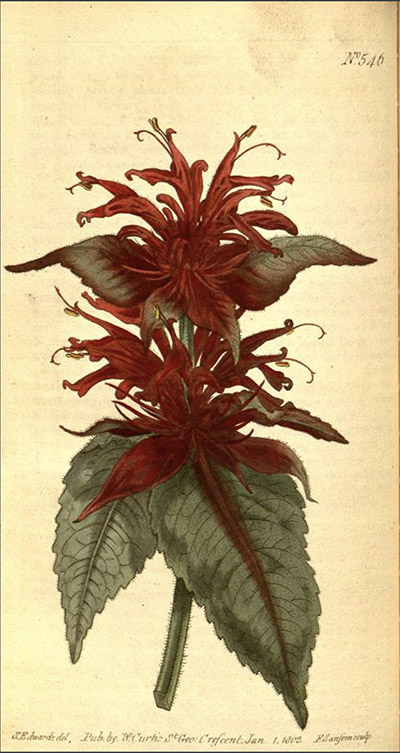
The Bicycle Boys in Oxfordshire
In the summer of 1928, two young men from Colorado USA disembarked at Liverpool docks, bought two bicycles and set off for a round trip of 1500 miles to see well-known gardens of England and Wales. Loyal Johnson who had taken a degree at Colorado Agricultural and Mechanical College was pursuing a Masters degree in landscape architecture and for this he wanted to see the gardens of the UK himself. He was accompanied by his friend Sam Brewster.
Arriving in Oxfordshire Blenheim Palace was the first stop before going on to see the parks and gardens of Oxford University.
The RHS Lindley Library was gifted Loyal’s diary and they have mounted an onlline exhibition of his travels round the country, featuring 12 gardens that they visited:
https://www.rhs.org.uk/shows-events/viewevent?EFID=3338&ESRC=CMS
Oxfordshire Garden Trust presents further details of their visit to Blenheim (Research – West Oxfordshire) and Oxford (Research – City of Oxford)
Cambridgeshire Gardens Trust has also contributed the Bicycle Boys story.
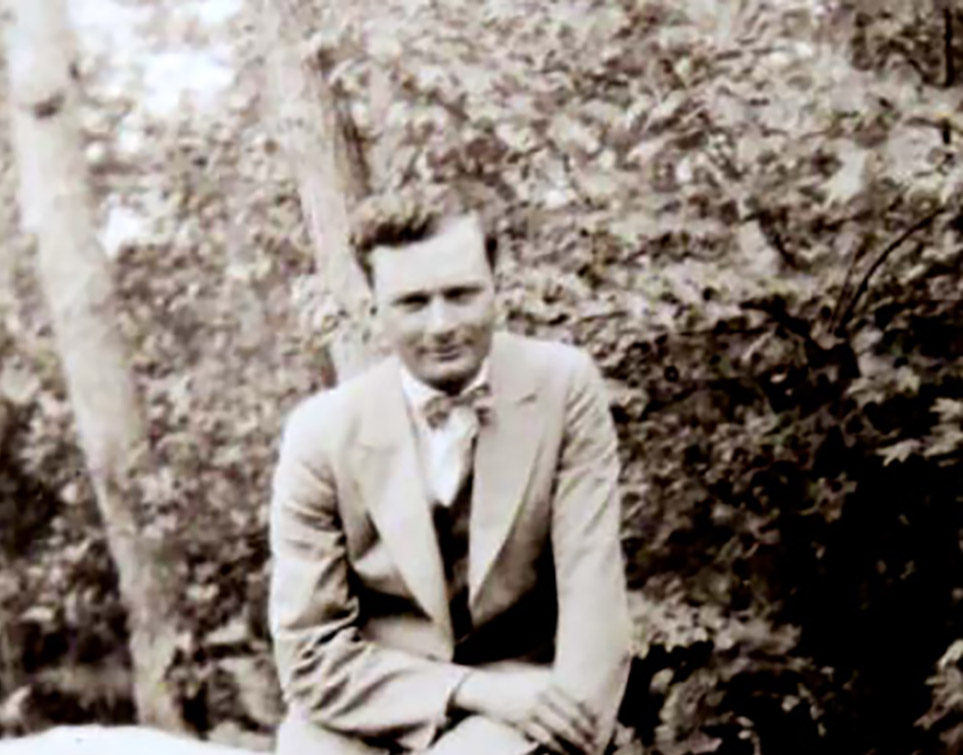
Recreational Parks Project
In 2020 OGT began a small research project to record a selection of the county’s urban, civic public parks and recreation grounds. Across the UK, parks are vulnerable from lack of funding, have features that are gradually being eroded through neglect or demolition, or may be under threat through housing targets and road construction.
In response to the Physical Training and Recreation Act 1837 the need for recreation space for children and adults was considered vital by some city and county councillors as well as by philanthropic benefactors. Fortunately some of the latter gave land or money and parks and recreation grounds and playing fields were created. In other cases, the city council and county councils purchased land for this purpose.
The five Oxfordshire District Councils have numerous urban and rural parks which may be cared for by them and the local parishes. Many of these are well recorded on their websites or have links to relevant information.
A full research report (pdf) is available at the end of each Recreational Park summary.
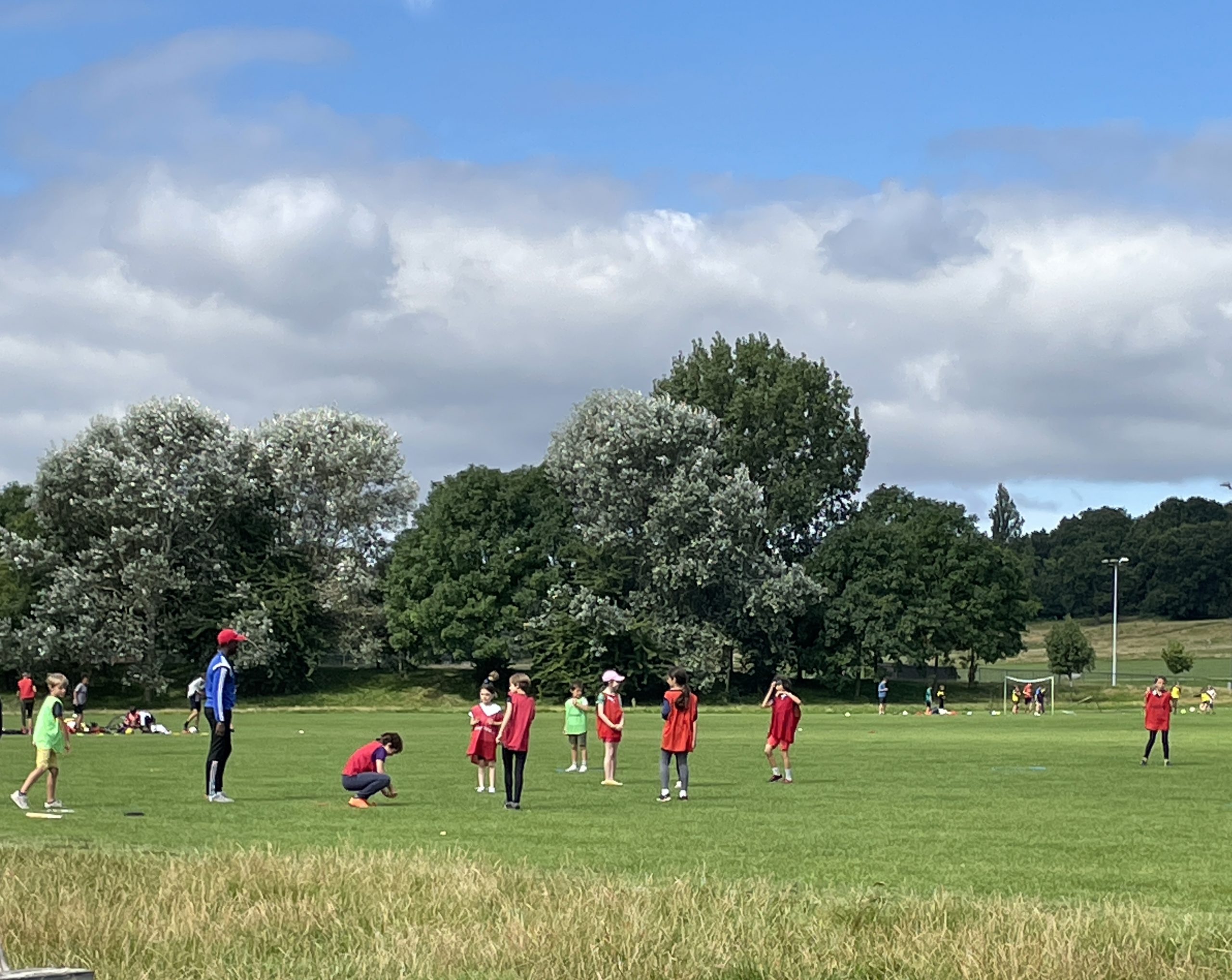
Capability Brown research project (CB300)
2016 marked the tercentenary of the birth of Lancelot ‘Capability’ Brown (1716─1783). To celebrate this event, the Gardens Trust initiated a research project (CB300) aimed at county gardens trusts to investigate the landscape gardens that Brown helped to create. The seven sites recorded here are those in the modern county of Oxfordshire that were researched by OGT volunteers, each showing some evidence for Brown’s involvement. This excludes Blenheim Palace which was the subject of a leaflet ‘Capability Brown at Blenheim Palace‘ published by the Historic Houses Association and Blenheim as part of the CB300 celebrations. Further research on Capability Brown’s landscapes countrywide are available at CapabilityBrown.org
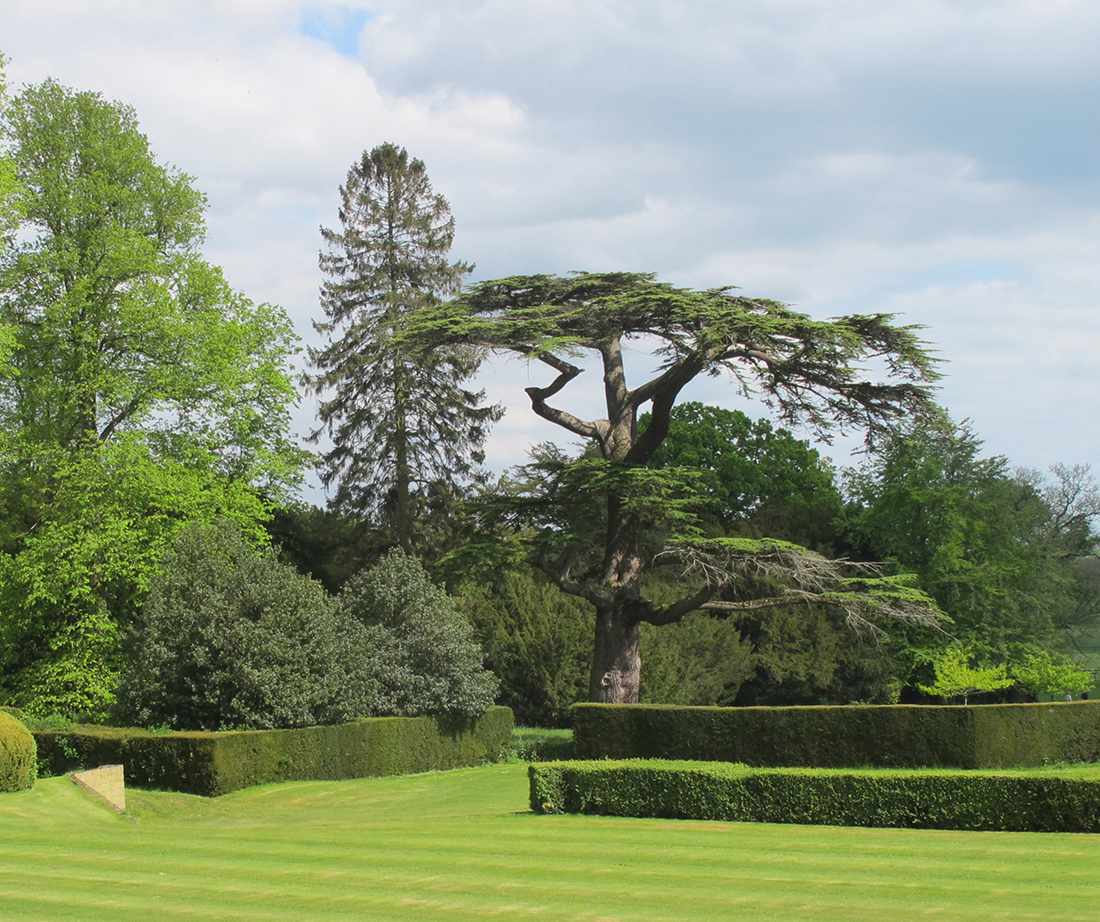
Walled Kitchen Gardens
In April 2012 the OGT was awarded £50,000 by the Heritage Lottery Fund to research the walled kitchen gardens of Oxfordshire.

Woodcut showing raised beds. From Thomas Hills “The Gardeners Labyrinth”. 1615 edn
The project co-ordinator recruited an enthusiastic band of volunteers to undertake the research, survey work and recording of these sites. The project was completed in July 2014 and has led to a much better understanding and appreciation of these often-neglected gardens. Summary information regarding many of the individual walled gardens can be found by clicking on the relevant district listed in the footer of this page.
The initial research involved looking at historical maps (mainly the first three editions of the Ordnance Survey c.1880 – 1920) and other readily available archives and data sources, including aerial photography. Our research identified the location of over 200 walled kitchen gardens in the county. We followed up with site visits to a selection of these gardens, where owners allowed access. Our surveys confirmed what elements of the original garden survive, and their condition. Some are still used as originally intended, others have been developed for housing and other purposes, some have simply been left alone, others demolished. We mounted a touring exhibition in 2014, visiting local libraries. A free booklet ‘The Walled Gardens of Oxfordshire’ is available from the OGT, summarising our findings.
We are grateful for the generous financial support of the Heritage Lottery Fund and for the encouragement and advice of English Heritage (now Historic England) and their consultants. Full research reports from the Wall Gardens project have been deposited at the Oxfordshire History Centre.
